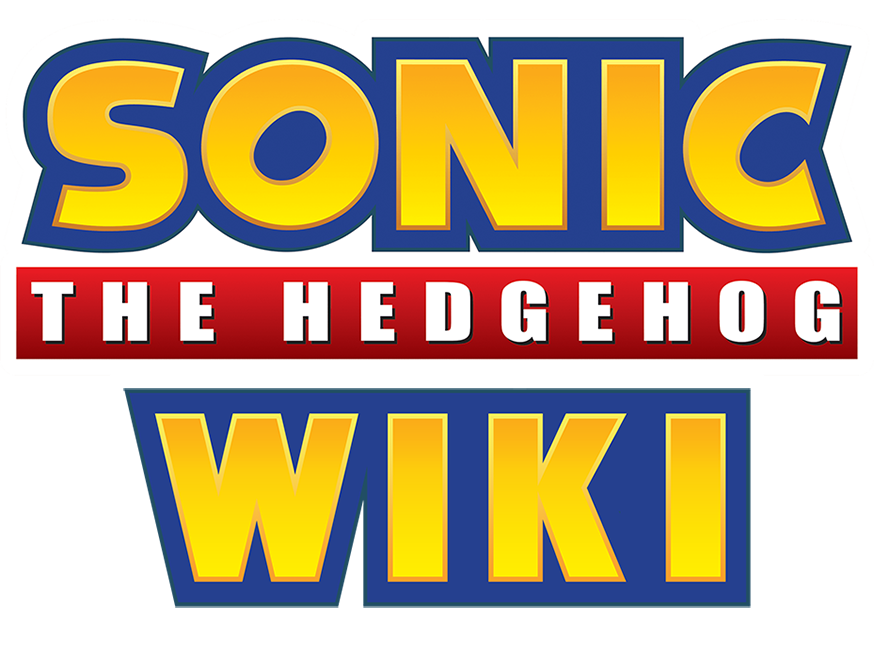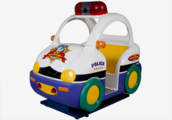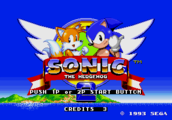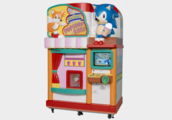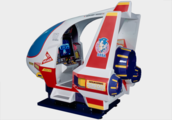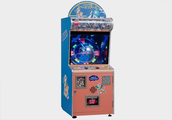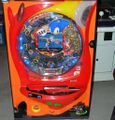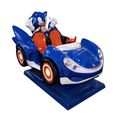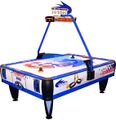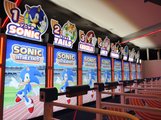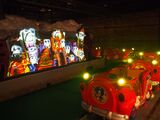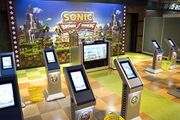Information in this article is about real-life people, companies, and objects, which do not relate to the in-universe Sonic series. |
- You may be looking for Arcade Collection.
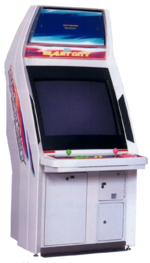
A video game arcade system or simply just arcade system is a coin-operated gaming machine typically installed in public business such as restaurants, bars, and amusement arcades. While the exact dates are debated, the golden age of arcade video games is usually defined as a period beginning sometime in the late 1970s and ending sometime in the mid-1980s.
Excluding several resurgences attempts in the early 1990s, the arcade industry subsequently declined in the Western hemisphere as competing video game consoles such as the Sega Dreamcast and PlayStation 2 increased in their graphics and gameplay capability over arcade cabinets and decreased in cost generally.
Sega arcade system[edit | edit source]
An arcade system board is a dedicated computer system created on purpose of running video arcade games. Arcade system boards typically consist of a main system board with any number of supporting boards.
Sega is currently the company with the most arcade system boards to this day, with the latest being the Sega Nu 2. The following is a list of arcade system boards released by Sega:
- Sega VIC Dual (1977)
- Sega Z80 (1980)
- Sega G80 (1981)
- VCO Object (1981)
- Sega Zaxxon (1982)
- Sega Laserdisc (1983)
Sega System series[edit | edit source]
- Sega System 1 (1983)
- Sega System 2 (1985)
- Sega System 16 (1985, further consolized as Mega Drive in 1988)
- Sega System 16B (1986)
- Sega System 24 (1988)
- Sega System 18 (1989)
- Sega System 14/C/C-2 (1989)
- Sega System 32 (1990)
- Sega System Multi 32 (1992)
Kyugo[edit | edit source]
Kyugo is an arcade system board released in 1984, co-developed with Japanese company Kyugo.
Super Scaler series[edit | edit source]
- Sega Space Harrier (1985)
- Sega OutRun (1986)
- Sega X Board (1987)
- Sega Y Board (1988)
Sega Mega series[edit | edit source]
- Sega Mega Tech (1988)
- Sega Mega-Play (1989)
Sega Model series[edit | edit source]
- Sega Model 1 (1992)
- Sega Model 2 (1993)
- Sega Model 3 (1996)[1]
Sega ST-V[edit | edit source]
ST-V (Sega Titan Video game system) is an arcade system board released by Sega in 1994. Departing from their usual process of building custom arcade hardware, Sega's ST-V is essentially identical to the Sega Saturn home console system. The only difference is the media: ST-V used ROM cartridges instead of CD-ROMs to store games.[2]
Sega NAOMI series[edit | edit source]
The NAOMI (New Arcade Operation Machine Idea) is the successor to the Sega Model 3. Sega first demonstrated NAOMI publicly at the 1998 Amusement Machine Show (an annual trade show hosted in Tokyo by the Japan Amusement Machinery Manufacturers Association).
- NAOMI (1998)
- NAOMI Multiboard (1999)
- Sega Hikaru (1999)
- NAOMI 2 (2000)
Triforce[edit | edit source]
The Triforce is an arcade system board developed jointly by Namco, Sega, and Nintendo, with the first games appearing in 2002. The name "Triforce" is a reference to Nintendo's The Legend of Zelda series of games and symbolized the three companies' involvement in the project.
Sega Chihiro[edit | edit source]
The Sega Chihiro system is a Sega arcade system board based on the architecture of the Xbox. The 733 MHz Intel Pentium III CPU and the Nvidia XChip graphics processor are common to both, but the Chihiro has a different MCPX chip with unique bootloader keys.
Sega Lindbergh[edit | edit source]
The Sega Lindbergh arcade system board is an embedded PC running MontaVista Linux (The Lindbergh Blue system used Windows Embedded instead). Sega had initially planned to use Microsoft's Xbox 360 as the basis for the arcade board, but instead opted for an architecture based on standard PC hardware.
Sega Europa-R[edit | edit source]
The Sega Europa-R is an arcade system board developed by Sega Amusements Europe.
Sega chose a PC-based design for this arcade board. This arcade board currently only runs two games, Sega Rally 3 and Race Driver: GRID (Stylized as simply GRID).
Sega Ring series[edit | edit source]
- RingEdge (2009)
- RingWide (2009)
- RingEdge 2 (2010)
Sega Nu[edit | edit source]
Released in November 2013, Nu is based on a mid-range PC running Windows Embedded 8.
List of Sonic arcade games[edit | edit source]
- Flicky
- Waku Waku Sonic Patrol Car
- UFO SegaSonic
- Sonic the Hedgehog
- Untitled SegaSonic the Hedgehog game
- SegaSonic the Hedgehog
- SegaSonic Popcorn Shop
- SegaSonic Cosmo Fighter
- Sonic the Hedgehog 2
- Sonic's Space Tours
- Sonic the Fighters
- Sonic the Hedgehog (AWP)
- Sonic & Tails Spinner
- CR Sonic
- Sonic Spinner
- Sonic Live!
- Sonic Sports Basketball
- Sonic & Sega All-Stars Racing Arcade
- Sonic Kiddie Ride
- Sonic Sports Air Hockey
- Sonic Sports Air Hockey 2P
- Sonic Sports Baby Air Hockey
- Sonic Sports Quad Air
- Sonic Sports Kids Basketball
- UFO Catcher Sonic Branded
- Sonic Series
- Sega Sonic Racing Twin[3]
- Sonic Ticket Winner[4]
- Sonic Blast Ball
- Sonic Athletics
- Sonic Ghost Shooting
- Sonic Brain Ranking
- Sonic Dash Extreme
- Mario & Sonic at the Rio 2016 Olympic Games Arcade Edition
- Mario & Sonic at the Olympic Games Tokyo 2020 - Arcade Edition
Cancelled games[edit | edit source]
Gallery[edit | edit source]
| Gallery |
|---|
|
References[edit | edit source]
- ↑ Model 3: Sega Affirms Arcade Supremacy. Imagine Media. May 1996. pp. 12–18.
- ↑ Sega STV (ST-V) Hardware (Sega). System 16 (2016-03-31). Retrieved on 2016-08-08.
- ↑ https://www.segaarcade.com/games/sega-sonic-racing-twin.html
- ↑ https://www.segaarcade.com/games/sonic-ticket-winner.html
| Sega | Home consoles | Sega Master System · Sega Mega Drive (Toshokan, Sega CD, Sega 32X, Mini, Mini 2) · Sega Saturn · Dreamcast |
| Handheld consoles | Sega Game Gear · Sega Mega Jet · Sega Nomad · Sega Pico · Coleco Sonic · Game Gear Micro | |
| Mobile | Sonic Cafe · Sega Mobile · Puyo Puyo! Sega | |
| Browser | PlaySega | |
| Nintendo | Home consoles | Nintendo GameCube · Wii · Wii U |
| Handheld consoles | Game Boy Advance · Nintendo DS · Nintendo 3DS | |
| Hybrids | Nintendo Switch | |
| Microsoft | Xbox · Xbox 360 · Xbox One · Xbox Series X and Series S | |
| Sony | Home consoles | PlayStation 2 · PlayStation 3 · PlayStation 4 · PlayStation 5 |
| Handheld consoles | PlayStation Portable · PlayStation Vita | |
| Mobile systems | iOS/iPad OS (Apple Arcade) · Android · Windows Phone | |
| Other | Arcade · Ouya · PC (Steam, Epic Games) | |
